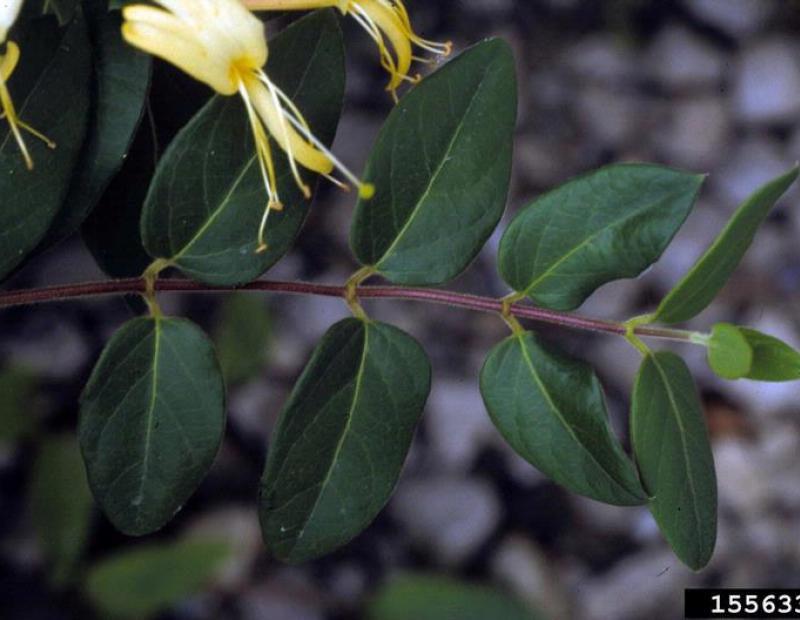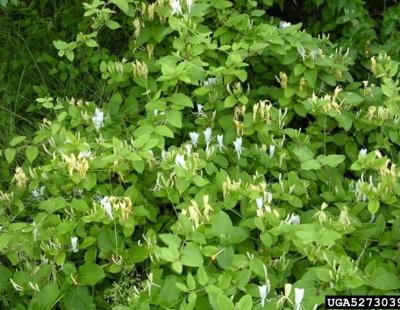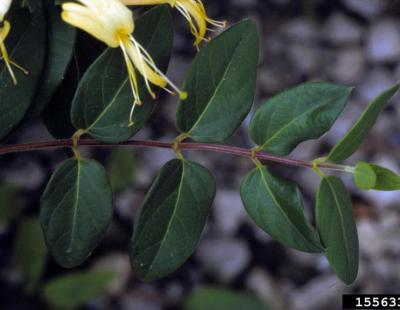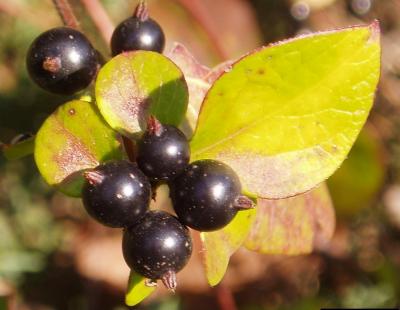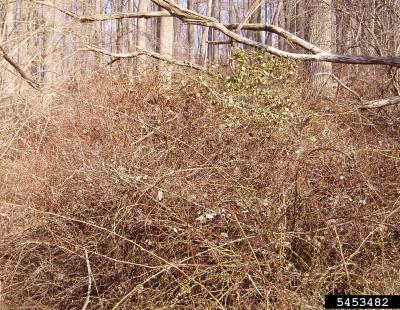- Terrestrial Plants
- Vine
Lonicera japonica damages forest communities by out-competing native vegetation for light, below-ground resources, and by changing the forest structure. The vines grow on top of the forest canopy, and completely cover small trees and shrubs. Once established, it grows in a dense blanket that threatens most shrubs, herbs and trees. This in turn, significantly reduces understory vegetation which causes this plant to spread rapidly and create more hospitable habitats to other invasives, including English ivy and kudzu. This honeysuckle grows well in areas of disturbance, and will readily make use of forest openings and edges. It can hinder later successional plants and maintain a monoculture of Japanese honeysuckle.
Japanese honeysuckle is native to eastern Asia, and was introduced into the United States during the early 1800's, earliest recorded in 1806 in Long Island, NY. It has been widely planted for its ornamental value, but has frequently escaped cultivation. This honeysuckle was also utilized for erosion control and wildlife forage. It has spread greatly throughout the southern and eastern United States. This plant has established population in over half of the U.S., and can be found in atleast 26 states.
Japanese honeysuckle is a perennial woody vine that spreads by seeds, rhizomes, and above ground runners. The vine can grow to be over 18 ft. long and may kill the tree it grows on. It's oval leaves are between 4-8 cm. long that are semi-evergreen to evergreen. As the stems age, they become hollow and start peeling in long strips. The two-lipped white to yellow flowers are extremely fragrant, especially during mid-summer. It can be distinguished from a close relative, the trumpet honeysuckle, by its dark-purple berries and unfused leaves. Once established, dense, tangled thickets can occur by stem branching, nodal rooting, and vegetative spread through rhizomes.
Japanese honeysuckle is widespread throughout the Lower Hudson region. It occurs in greatest densities in early-successional habitats, such as old-fields and shrub thickets. It can establish itself through mature forest as well, persisting in the understory, until a disturbance causes a break in the canopy. It is shade tolerant, although it does need some sunlight to grow successfully.



